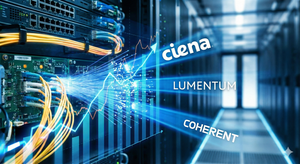SOURCE: VMware
DESCRIPTION:
VMware believes that we can help accelerate the global transition to a zero-carbon economy through solution innovation that enables a sustainable digital infrastructure for our customers. Sustainability innovation is a fundamental component of our ESG-related 2030 Agenda, with a vision to build a sustainable, equitable, and more secure future for all. And we’re hard at work to make sure that vision becomes a reality.
In 2018, I jumped at the chance to join VMware as the Director of Sustainability Innovation. At the time, I was working at Akamai Technologies as the Senior Director of Environmental Sustainability, where I spent 10 years establishing and leading Akamai’s corporate-sustainability program. While working on an aggressive goal of powering Akamai’s global network of thousands of data centers with 50% renewable energy, I realized that there was an opportunity to make an even more substantial impact in the value chain through large-scale virtualization and further sustainability innovations.
Leveraging and building on VMware’s virtualization technology and multi-cloud platform provides an enormous opportunity to help customers reduce the environmental impact of datacenter and cloud operations, extracting more productivity from their infrastructure investments. This resonates with my core belief that we can truly scale sustainability impact when innovation and business value align.
With the impacts of climate change becoming increasingly dire, there is a growing demand for urgent action, including the need for low-carbon solutions. To date, 37 countries committed to Net Zero Carbon goals and are implementing policies, regulations, and incentives to accelerate the transition to a low-carbon economy. To date, more than 1,800 global companies spanning all sectors, including many VMware customers, committed to science-based targets to reduce greenhouse emissions in their operations and supply chains to help them reach net-zero carbon by 2050. These companies are looking for suppliers with low-carbon solutions to help them achieve these goals.
The intrinsic sustainability of virtualization
I like to use the analogy that VMware’s virtualization technology is like the LED lightbulb of computing. The more of it you use, the more sustainable your datacenter operations are, using less infrastructure, energy, and carbon. Over the past decade, VMware helped flatten the world’s datacenter electricity consumption through server consolidation by enabling companies to run tens of applications per server, compared to one app per server. While Internet traffic has increased twelve-fold and workloads have increased almost eight-fold since 2010, IEA reports that data-center electricity consumption remained flat.
In addition, a 2020 IDC report estimated that, since 2003, VMware’s virtualization technology has enabled our customers to collectively avoid the deployment of 142 million servers, consumption of 2.4 billion megawatts of energy, and emission of 1.2 billion metric tons of greenhouse gases. That’s roughly equivalent to three percent of the world’s carbon emissions in 2019.
Nonetheless, even with these efficiency gains, it’s estimated that datacenters (including those in telecommunications) represent about one percent of the world’s electricity consumption. With a slowdown in efficiency gains from virtualization, Moore’s Law, and Dennard Scaling, some predict that without sustainability-focused innovation, rapid digital transformation across industries and the emergence of compute-intensive technologies (e.g. AI/ML, 5G, virtual reality, edge computing, and blockchain) will push electricity consumption from roughly one percent into the double digits over the next decade. During that same timeframe, climate scientists are stating that we need to reduce global carbon emissions by half to avoid the worst impacts of climate change.
At VMware, we are seizing the opportunity to build on our foundation of computing that is already intrinsically sustainable. Companies with commensurate business value can still gain much more efficiency and VMware, with its multi-cloud strategy and longstanding commitment to sustainability, is perfectly positioned to deliver these gains. For example, a 2015 Stanford-Anthesis Group study looked across more than 16,000 servers in 10 datacenters and found that, over a six-month period, a quarter of the servers and 30% of virtual machines were deemed comatose (no CPU, memory, network, connection, or user activity). What’s more, roughly 35% of servers and up to 50% of virtual machines were idle, defined by having CPU and network activity less than five percent of the time. This is a common problem across the world’s datacenters. It is a problem that represents both an enormous financial cost (underutilized IT investment and operational costs, estimated in the tens of billions of dollars) and sustainability impacts from wasted gigawatts of energy consumption and millions of metric tons of carbon emissions.
Sustainable computing: workload energy and carbon efficiency
Ultimately, sustainable computing is about minimizing the energy and carbon associated with running workloads. Workload energy efficiency is realized through minimizing on-premises and public-cloud infrastructure required to run workloads within the context of meeting business requirements for those workloads. However, even with the highest level of energy efficiency, workloads will always need energy. Therefore, sustainable computing also requires workload carbon efficiency. That means managing when and where workloads are run, so we can take advantage of renewable energy. Finally, energy and carbon metrics need to be integrated into management systems, side-by-side with performance and availability, to inform more efficient ways of operating.
Implementing sustainable computing will not only have beneficial sustainability outcomes but also business outcomes. VMware’s solutions demonstrate elements of sustainable computing and what’s possible in terms of beneficial sustainability and business outcomes. For example, VMware Cloud Foundation (VCF), with virtualized compute, storage, networking, and management, provides a hyperconverged infrastructure environment that enables multi-tenancy and high VM-density. Compared to basic virtualization, VCF reduces the need for host, storage, and networking equipment, which in turn reduces the data center rack footprint. In one case study, a customer saw a more than six-fold increase in VM-density leading to a nine-fold decrease in the per-VM energy consumption and carbon emissions. In another example, Hybrid Cloud Extension (HCX) facilitated the migration to a more energy-efficient and cheaper datacenter and hardware refresh. The outcome was $3 million in annual savings, a 68% reduction in equipment rack footprint and a 66% decrease in annual energy use and carbon emissions. Finally, customers moving workloads from on-premises to VMware Cloud-on-AWS, may not only enjoy more agility with elastic, pay-as-you-go capacity, but potentially significantly reduced energy and carbon footprints through more energy-efficient and renewable energy-powered hardware and data center infrastructure.
Nonetheless, this blog series is not about what sustainable computing solutions are available today, but about innovations in sustainable computing that will take us further. Here, I laid out the foundation for sustainable computing — what it is and why it’s the next innovation frontier. In part two, I will dive into various strategies for achieving workload energy and carbon efficiency. In the final blog, I will provide promising examples of sustainable-computing innovations in progress here at VMware.
During Climate Week (September 20-26), I hope you’re able to reflect and discuss how we can do more to accelerate climate action. I’ll be taking part in a panel session entitled “Transformation of Transport and Energy by 2040 or Sooner.” We’ll also have some great sessions on sustainable computing at VMworld 2021 (Oct. 5-7), including:
- IC2217: Datacenter Sustainability Strategies, A Win for Your Budget and the Planet
- IC2792: Sustainability as a Strategic Differentiator for Organizations (Adrian Cockcroft, VP Sustainability Architecture, Amazon)
- IC2794: Make Sustainable Choices for Product Innovation in Operations (Adrian Cockcroft, VP Sustainability Architecture, Amazon)
- IC2257: Supporting Carbon-Neutral Growth with Sustainable Data Centers (Dubai Airports)
- IC1067: Reduce the carbon footprint by moving your workloads to VMware Cloud on AWS
- MCL2340: VMware Zero Carbon Committed as a Cloud Provider Differentiator for Growth
Learn more and register for VMworld 2021 here.
KEYWORDS: NYSE: VMW, VMware






